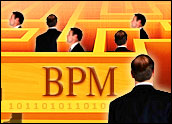
Avaya is extending its mobile applications to give users of Nokia Eseries business devices the ability to switch back and forth between private WiFi and public cellular networks.
The application enhances a company’s productivity and cost savings, Steve Hardy, Avaya director of product marketing, told CRM Buyer. It is designed for large corporate campuses or buildings that spread across hundreds of thousands of square feet, where there are often many dead zones. Employees that move around a lot during the day are more easily accessible when they can shift back and forth between cellular and local area networks.
Washington, DC-based George Washington University, one early adopter of the application, cites that capability as a reason for deploying it. “We have a lot of equipment in rooms in basement of buildings where cellular cannot reach,” Bret Jones, the school’s managing director of technology operations and engineering, told CRM Buyer.
Cost Savings
Hardy also noted that the application can cut cell phone bills significantly.
When a worker is communicating while roaming inside corporate facilities, Avaya one-X Mobile Dual Mode uses the company’s communications system and a WiFi network instead of the cellular network, which bills by the minute.
When workers venture out of the company’s WiFi network range, they can transfer calls to a cellular network by pressing a button, keeping their conversations going uninterrupted.
Features available with the application include conferencing, call transfer and extension dialing. Security safeguards include the ability to authenticate the Nokia Eseries device to a PBX (private branch exchange), which allows access only to authorized users.
The wide range of features available was another factor in George Washington University’s decision to expand its use of Avaya. The university also has a relationship with Cisco. However, he said, “for an enterprise of our size, the features in Avaya are best suited for us. The intent with these investments is to increase productivity and cost savings.”
Fixed Mobile Convergence
The IP-based application is part of the company’s larger fixed mobile convergence strategy. Calls made to a worker’s deskphone, for instance, can be received on a Nokia Eseries business device, and vice versa.
“Dual mode is just one facet of the wide range of capabilities that an enterprise information worker needs,” Avaya’s Hardy said.























































